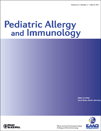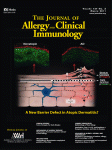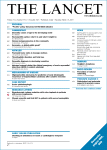Phase One Prevalence
At the time of ISAAC Phase One there were few countries in the world where anything was known about the prevalence of asthma, rhinitis and eczema, and even less about their severity. Little was known about the effects of gender. Almost all the studies to that date had been undertaken in affluent, high income, developed countries, mostly Australia, Canada, New Zealand, UK and USA.
The new key scientific findings from Phase One were the description of the prevalence and severity of asthma [Asher 1998], rhinitis [Strachan 1997] and eczema [Williams 1999] in two age groups (6-7 yr olds, 13-14 yr olds), in 156 centres from 56 countries, most of whom had never undertaken research of this nature before. There were striking variations in the prevalence of symptoms of asthma, rhinitis and eczema throughout the world (more than 20 fold between centres [Beasley 1998], both within and between countries inhabited by similar ethnic groups, suggesting that environmental factors may be critical in determining disease expression.
The relationship of the three conditions was examined. Most symptomatic children had symptoms of only one disorder in the last year, which indicates that risk factors different from atopic sensitisation may be important in the development of these three conditions [Beasley 1998].
Asthma
The prevalence of wheeze in the last 12 months ranged from 2.1-32.2% in the older age group and 4.1-32.1% in the younger age group and was particularly high in English speaking countries and Latin America. A video questionnaire completed in the older age group in 99 centres (42 countries) showed a similar pattern. While the high prevalence centres for asthma symptoms were mainly in developed countries, there were some (for example Costa Rica, Peru) which also had high rates. There were some large differences in prevalence between people of similar genetic origin living in different environments (for example Hong Kong and Guangzhou, China). The prevalence of asthma symptoms was greater in males in the younger age group and a mixed picture in the older age group, but on average females had slightly higher prevalence than males [Asher 1998]. We concluded that environmental factors were the cause of these large variations.
There are extensive data on the prevalence of childhood asthma world-wide but the relationships between asthma symptom prevalence, mortality and hospital admissions had not been investigated. This was done with Phase One written questionnaire, and Phase Three time trends centres - 12-month period prevalence of asthma symptoms by parental report in both age groups in 60 countries. The prevalence values of any wheeze and severe wheeze were correlated with national data on mortality and hospital admissions for asthma in 5–14 year olds. All correlations with prevalence were positive. Thus the prevalence of asthma symptoms in children obtained from local questionnaire studies may provide a guide to estimate the incidence of severe episodes of asthma in countries with incomplete data on hospital [Anderson 2008].
Rhinitis
While the initial ISAAC approach to nasal symptoms had been to use them to define allergic rhinitis, all the ISAAC papers focused in particular on rhinitis with itchy-watery eyes (rhinoconjunctivitis) as being the symptom combination most closely relating to objective indicators of allergic sensitisation in European children. [Strachan 1997]. The prevalence of rhinoconjunctivitis in the past year varied across centres from 0.8 to 14.9% in 6-7 yr olds, and from 1.4 to 39.7% in 13-14 year olds. In centres of higher prevalence there was great variation in the proportion of rhinoconjunctivitis labeled as hay fever. The lowest prevalences were found in parts of eastern Europe and south and central Asia.
Eczema
At the time of ISAAC Phase One there had been only one between country study comparing atopic dermatitis in three countries in Northern Europe. In ISAAC the prevalence range for symptoms of eczema was from less than 2% in Iran to over 16% in Japan and Sweden in the 6 to 7 year age range and less than 1% in Albania to over 17% in Nigeria for the 13 to 14 year age range. Higher prevalences of eczema symptoms were reported in Australasia and Northern Europe, and lower prevalences were reported in Eastern and Central Europe and Asia. Similar patterns were seen for symptoms of severe eczema [Williams 1999]. Thus eczema is a common health problem for children and adolescents throughout the world. Studies that include objective skin examinations have since been completed in ISAAC Phase Two [Flohr 2009] confirming these findings.




